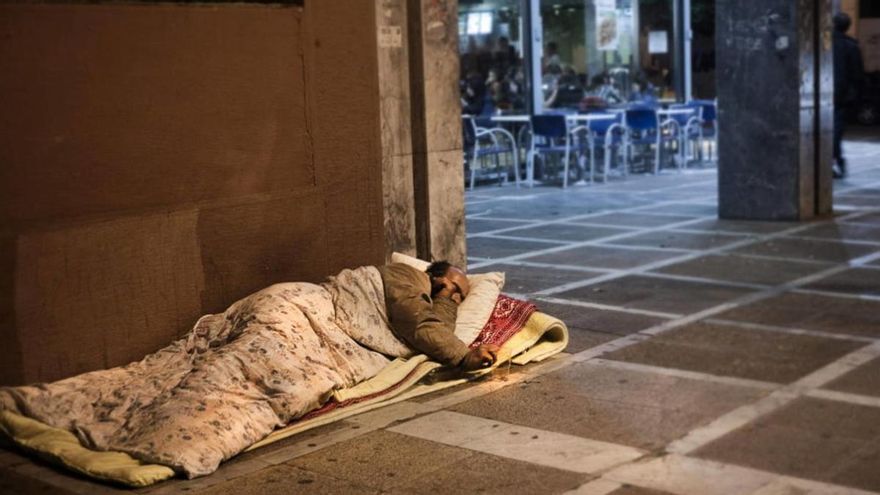
A common belief is that for many years, the capitals of the Canary Islands have rarely seen beggars, marginalised individuals, and those with mental health issues. In the past, however, poverty was more apparent. Santa Cruz de Tenerife, for instance, has often been a city caught between the humble and the impoverished, serving as an administrative capital without a robust economic engine to develop it socially and economically. Its port has never been able to rival that of Las Palmas de Gran Canaria, both before and after the civil war (it currently faces inadequate management). Descriptions of the capital of Tenerife from the late 19th and early 20th centuries remain startling: instances of malnutrition and occasional hunger, unsanitary living conditions, and widespread infectious diseases. Yet those who experienced the relative economic prosperity of the 1960s—a time marked by a growing middle class and the rise of social services—can confirm that during that era, and in the subsequent decades, most local residents were familiar with the beggars and mentally ill individuals in the city. They frequently became figures of harsh urban folklore. However, this did not imply that poverty was not pervasive. We became somewhat wealthier, and above all, poverty transformed into a cleaner, more subdued presence.
Today, the situation is different. This transformation is complex, and one of its origins, in my view, emerged with the onset of the 2008 crisis, whose most severe impacts lingered for over five years. Alongside a tremendous rise in unemployment, underemployment and the informal economy began to thrive once more, causing a generation of islanders to transition directly from unemployment to benefits and to pensions that were meagre and without any intermediary steps. Concurrently, there has been a shift in family dynamics, which, while still a fundamental safety net, no longer serves as the robust institution of intergenerational support it once was. It was roughly twenty to twenty-five years ago that the rate of single-parent families in the Canary Islands surged, often comprised of adolescent or very young mothers facing the harsh realities of poverty and social exclusion: a persistent issue of feminisation of poverty that remains unaddressed. One particularly concerning beggar in Santa Cruz is a man in his thirties who frequently yells in the streets at all hours. His cries are chilling and resonate with despair. Occasionally, he enters a perfume shop to apply a few drops of Giorgio’s Aqua onto his tattered shirt before returning to the streets. His mother once tried to manage his condition with psychotropic medication; however, she passed away prematurely, leaving her son to roam aimlessly for hours through the chicharrera neighbourhoods, occasionally haunted by the torments that plague his mind.
Just the other day, I sat on a bar terrace in the centre of the city. I was there, consuming half a litre of coffee, for around an hour. Throughout that time, six or seven individuals approached me seeking spare change. How many individuals in the entire municipality could be bedridden by this situation? Two hundred? Perhaps 300? Is it not feasible for a city of 220,000 residents to address this social issue, acknowledging its intricacy? Certainly, it can and should, but for this, a transformative social care plan equipped with adequate professional and technical resources is vital. Rather than waiting for applications and approvals, action must be taken on the streets. We need more structured public intervention, more social workers, and fewer bureaucrats, along with collaboration from the council to establish additional social and healthcare provisions in the main cities of Tenerife. Adding just 20 more beds to the Santa Cruz shelter is merely a farce and in poor taste.
Subscribe to continue reading
















